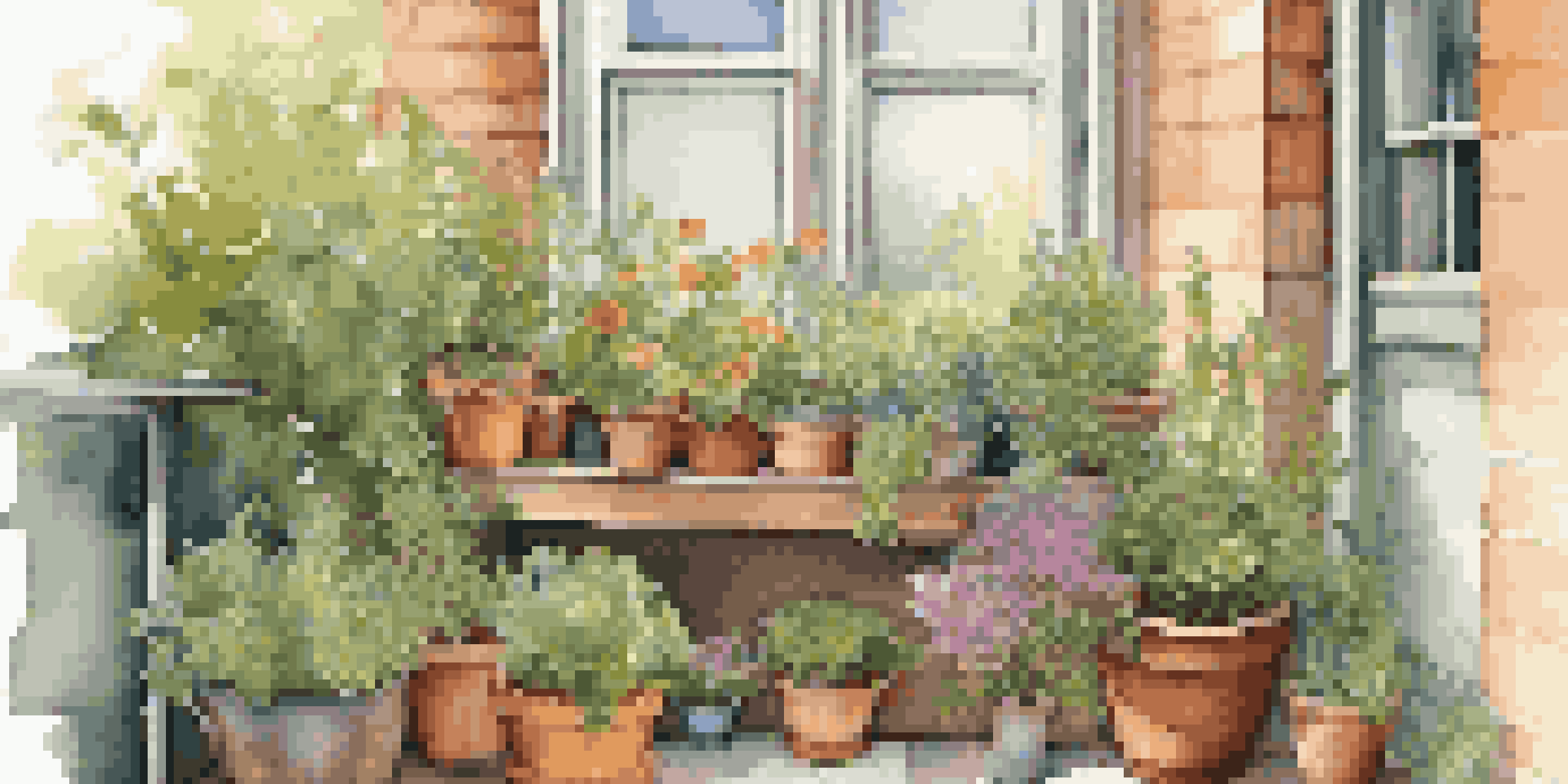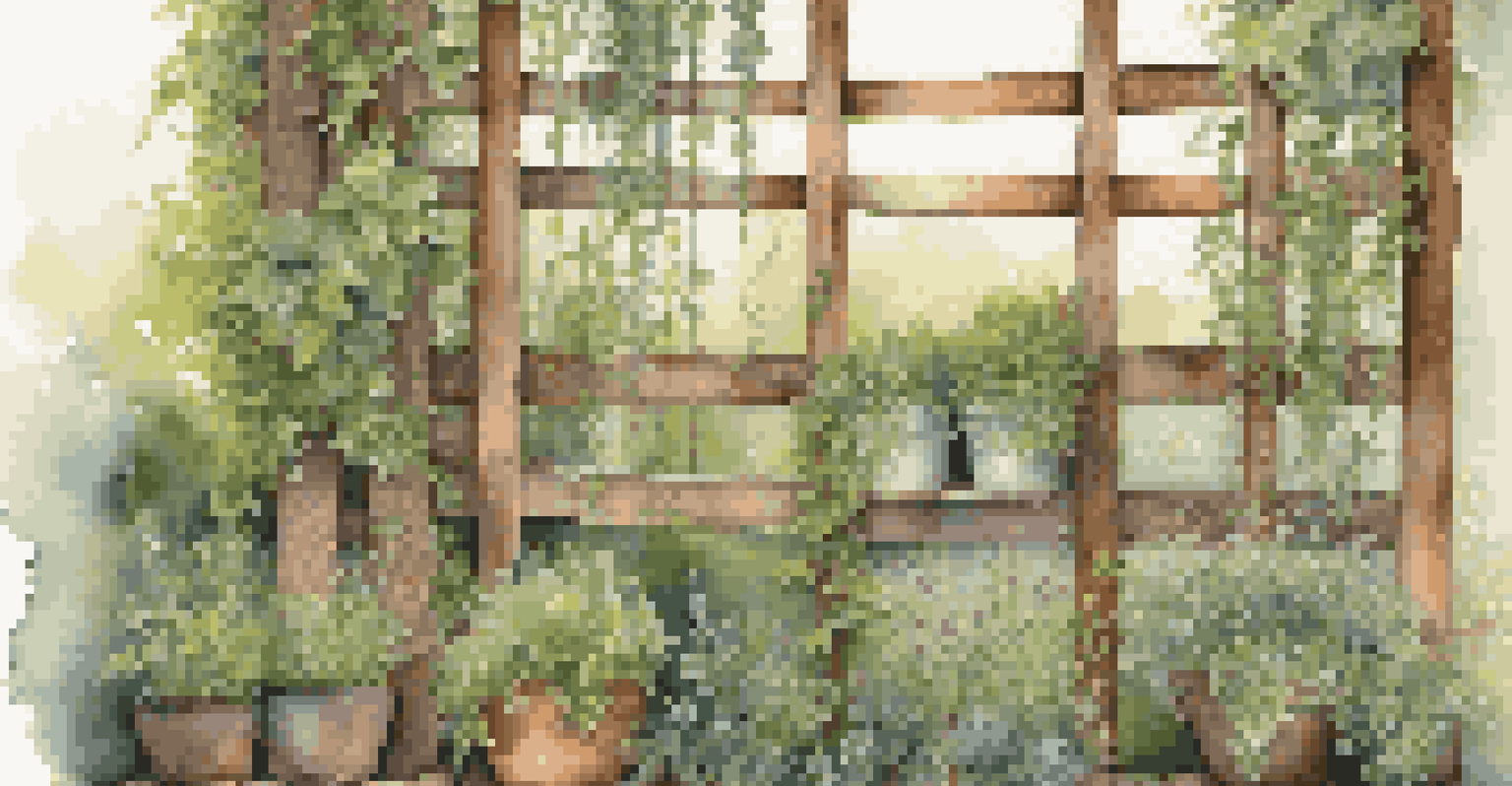Practical Tips for Creating a Sustainable Home Garden

Start Small: Choose the Right Space for Your Garden
When embarking on your sustainable gardening journey, begin with a small, manageable space. This approach allows you to focus on learning the basics without feeling overwhelmed. Whether it's a sunny corner of your backyard or a few pots on your balcony, every little bit helps.
To plant a garden is to believe in tomorrow.
Selecting the right location is crucial for your plants' success. Look for areas that receive ample sunlight and have good drainage. Additionally, consider how often you'll be able to tend to your garden, as accessibility will influence your commitment and enjoyment.
Starting small also means you can experiment with different plants. Try growing herbs, veggies, or flowers that you love. As you gain confidence and knowledge, you can gradually expand your garden, creating a lush, sustainable oasis.
Use Native Plants to Support Local Ecosystems
One of the best ways to promote sustainability in your garden is by incorporating native plants. These flora are adapted to your local climate and soil, making them easier to grow and maintain. Plus, they provide vital habitats and food sources for local wildlife, such as bees and butterflies.

Native plants require less water and are often more resistant to pests and diseases, reducing the need for chemical interventions. This means less time spent on maintenance and a healthier garden overall. Consider visiting local nurseries to find native species that thrive in your area.
By choosing native plants, you're not just benefiting your garden; you're also contributing to the preservation of your local ecosystem. It's a win-win situation that exemplifies the beauty of sustainable gardening.
Embrace Companion Planting for Better Growth
Companion planting is a fantastic technique that involves growing different plants together to enhance their growth and deter pests. For example, planting basil alongside tomatoes can improve their flavor while keeping harmful bugs at bay. This natural synergy promotes a healthier garden ecosystem.
The best time to plant a tree was twenty years ago. The second best time is now.
In addition to improving plant health, companion planting can also maximize space in your garden. By strategically placing plants that complement each other, you can cultivate a thriving garden even in limited areas. This method encourages biodiversity, which is essential for sustainability.
Experimenting with companion planting can be a fun learning experience. As you observe which combinations work best in your garden, you'll develop a deeper understanding of your plants’ needs and how they interact with one another.
Create a Compost Bin for Nutrient-Rich Soil
Composting is a cornerstone of sustainable gardening, allowing you to recycle kitchen scraps and yard waste into nutrient-rich soil. By creating a compost bin, you reduce waste while enriching your garden, promoting healthy plant growth and soil structure.
Start by collecting organic materials like fruit peels, vegetable trimmings, and dried leaves. Layering these items in your compost bin creates the perfect environment for decomposition. Over time, you'll have a natural fertilizer that your plants will love, reducing the need for chemical fertilizers.
Not only does composting enhance your garden's health, but it also helps reduce landfill waste. By making composting a regular part of your gardening routine, you're taking an important step towards a more sustainable lifestyle.
Implement Water-Saving Techniques in Your Garden
Water conservation is vital for creating a sustainable home garden. Implementing water-saving techniques such as drip irrigation or rainwater harvesting can significantly reduce your water usage. These methods ensure that your plants receive the moisture they need without wasting resources.
Consider installing a rain barrel to collect rainwater from your roof. This water can be used to irrigate your garden, providing a free and eco-friendly resource. Additionally, mulching around your plants helps retain moisture in the soil, reducing the need for frequent watering.
By being mindful of your water usage, you not only support your garden's health but also contribute to conservation efforts in your community. Simple changes can lead to a big impact on both your garden and the environment.
Utilize Organic Pest Control Methods
Keeping pests at bay is essential for a healthy garden, but using harsh chemicals can harm the environment. Embracing organic pest control methods is a sustainable solution that protects your garden and local wildlife. Options like neem oil, insecticidal soap, or introducing beneficial insects can effectively manage pest populations.
Creating a balanced ecosystem in your garden helps prevent pest outbreaks. Planting flowers that attract pollinators and predatory insects can naturally keep harmful bugs in check. By fostering this balance, you reduce the reliance on synthetic pesticides.
Maintaining a healthy garden through organic methods not only sustains your plants but also promotes a safer environment for everyone. You'll find that gardening can be both rewarding and eco-friendly when you choose natural alternatives.
Incorporate Vertical Gardening Techniques for Space Efficiency
If you're short on space, vertical gardening is a creative solution that maximizes your growing area. By utilizing walls, trellises, or hanging planters, you can grow more plants in a limited space while adding visual interest to your garden. This approach is especially beneficial for herbs and climbing plants.
Vertical gardens also improve air circulation and sunlight exposure for your plants, which can lead to healthier growth. Additionally, they can help reduce soil erosion and water runoff, contributing to a more sustainable garden.

As you explore vertical gardening, you'll discover a whole new world of possibilities. This innovative technique allows you to be both space-savvy and aesthetically pleasing, proving that sustainability can be stylish.